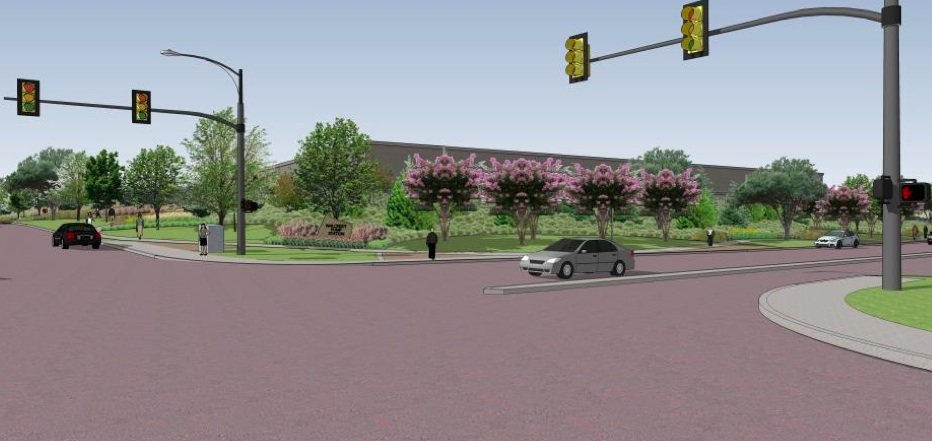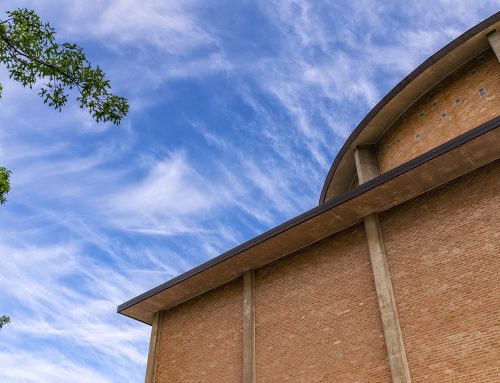You’ve likely driven along Hillcrest dozens of times and never noticed this residence, which houses the Walcrest pump station.
You also may not have realized that the chain link fence running along the northeast corner of Walnut Hill and Hillcrest adjacent to this house contains a 20-million gallon underground reservoir that stores and transmits drinking water to roughly 200,000 individuals a day in the city of Dallas.
But back in 1956 when Walcrest was built, pump stations were only designed to last about 30 years. Dallas Water Utilities (DWU) says that, to comply with Texas Commission Environmental Quality (TCEQ), the existing pumps at Walcrest need mandatory improvements that warrant a larger and more energy-efficient structure.
As part of the DWU capital improvement program, Walcrest will be demolished to make way for a 9,625-square-foot pump station and reservoir that is up to TCEQ code. That doesn’t just include demolishing the house pictured above, but the enormous underground water reservoir as well.
Last Thursday, a few dozen residents gathered in the Hillcrest High School auditorium to learn about the project and what changes are in store for the prominent corner in our neighborhood.
Dallas Water Utilities senior program manager Mark Simon’s presentation emphasized the need to replace the facility.
According to Simon, the structural integrity of the reservoir was evaluated in 2010, and its condition warranted replacement over rehabilitation. Additionally, the pump station currently does not meet current electrical and building codes.
A contract was awarded to replace Walcrest in 2008. Two factors have contributed to the delay in construction, Simon says, including the structural assessment of the existing reservoir, referenced above, and “the zoning request and subsequent redesign to address as many neighborhood requests as practical.”
Despite the need for Walcrest to be replaced, residents around the future construction site have been concerned about the appearance and footprint of such a large facility so close to their homes.
As we reported in May, the plan to replace Walcrest requires a change to its single-family zoning to move forward, since the new structure would comprise more than 25 percent of the lot.
Walcrest is located in Lee Kleinman’s District 11, but it’s surrounded by constituents in Jennifer S. Gates District 13. Both council members have been active in the discussion to keep neighbors informed of the site plans and zoning request that were first discussed last December.
Since then, representatives from at least five neighborhoods, including Glen Lakes, Preston Hollow North, Preston Hollow East, Meadows, and Windsor Park, along with a representative of the duplexes on Briarmeadow/Crestmeadow directly adjacent to Walcrest, have met with DWU engineers and city planners six times to give input and learn about the new facility.
Some of the changes from the original plans, (we posted those in February here) have been costly.
According to Simon, the most recent cost estimate before any design changes was $36 million. Now, the current estimate is almost $46 million.
The original plan was to have the pump station right behind the duplexes on Briarmeadow, but neighbors were concerned about noise and drainage issues, so the pump facility will now be built where the Aberdeen parking lot for Hillcrest High School is, eliminating about 174 parking spaces for the school.
Kleinman calls the relocation of the pump station a victory for his constituents. Gates says Dallas ISD officials approved of the location change. According to Simon, even without the Aberdeen parking lot the school has ample parking for its students and administration. (No representatives from the high school were present at Thursday’s meeting.)
Other improvements to the original plan include the installation of ADA-compliant curvilinear sidewalks on Walnut HIll and Hillcrest, along with mostly native landscaping.
Simon says that the new building housing two ten-gallon water reservoirs will be about 400 by 268 feet. From the sidewalk you will see about a 17-foot tall berm — a dirt hill, essentially — and a 17-foot wall beyond that.

renderings of the completed pump station/reservoir located at the Walnut Hill/Hillcrest intersection
At Thursday’s meeting, one neighbor compared the plans to a mausoleum, desiring to add higher berms or add windows to help the facility blend into the residential neighborhood better.
At this stage however, DWU has settled on a few concepts using the input from neighborhood representatives received since December, and one of these plans will be chosen to go before the city planning commission next month.
Aside from aesthetics, other concerns were about water quality and long-term landscaping maintenance.
Jodi Puckett, director of DWU, says that DWU is in charge of landscaping maintenance and will contract it out.
“We won’t just be sending weedwackers and lawnmowers. It is drip landscaping and we will hire landscaping crews that will maintain the upkeep.”
Simon says that in anticipation of the Walcrest demolition, a reservoir and pump station at Forest and Abrams will be tested to see if it can adequately handle distribution during the project so water supply won’t be impacted. Both Puckett and Simon say that water pressure and quality will not be affected during the duration of the construction.
“Lee Kleinman and I want to ease neighbors concerns, but this is essential for our water supply and needs to happen,” Gates says. “If we want to serve water to north Dallas homes we need to replace this station.”
Below is a rough timeline of the project’s construction, pending the approval of the city planning commission and City Council, indicates that construction on the new Walcrest facility will be complete in 2019.
Oct. 2: City planning commission zoning meeting
Nov. 12: City Council zoning approval
By April 2015: finalize construction bid
May 2015: advertise project
Sept. 2015: award construction
Oct. 2015: construction begins:
- 6-9 months to demo existing reservoir
- 36 months to construct new facilities
- 6 months for final grading, landscape, cleanup







